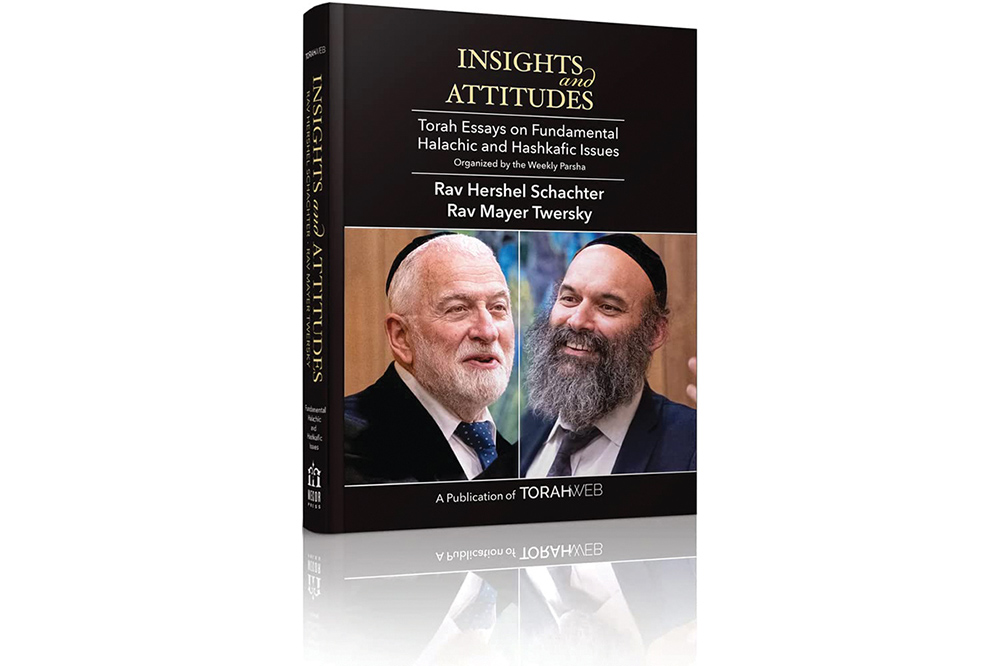
Editor’s note: This series is reprinted with permission from “Insights and Attitudes: Torah Essays on Fundamental Halachic and Hashkafic Issues,” a publication of TorahWeb.org. The book contains multiple articles—organized by parsha—by Rabbi Hershel Schachter and Rabbi Mayer Twersky.
The Rambam (towards the end of his commentary to Mishnayos Sanhedrin) lists what he considers to be the thirteen principles of our faith, the 12th of which is to believe in the coming of Mashiach. This point is not unique to Lubavitch groups; it is part of the belief system of all Jews. We believe that God did not forsake the world after the six days of creation. He continuously sees to it that history unfolds in the way He wants. In the end of days, His kingdom will be accepted by all mankind, and the Melech HaMashiach will represent Him.
This point of faith appears throughout the books of the prophets from the Torah of Moshe Rabbeinu to the nevuah of Malachi. One of the two places in the Chumash where the principle of Mashiach is spelled out is in parshas Balak. The Torah records the prophecy of Bilam who speaks of King David as well as his descendent—the Melech HaMashiach.
Towards the end of the Mishna Torah, the Rambam dedicates two chapters to the topic of Mashiach. He writes that the exact details of the coming of Mashiach are very unclear, and are at present not that important. A tendency to dwell on these details will lead one to neither a greater love for God, nor a greater fear of God. The important point is that we believe in the principle of the coming of a human being who will be a descendent of King David (Hilchos Melachim 12:2). In another essay (Iggeres Teiman) the Rambam points out that the Mashiach will be highly intelligent, a tremendous prophet, and admired and respected by all. He will be an unknown figure until the time he is “revealed,” and his debut will take place in Eretz Yisrael.
We all have an obligation to hope for the coming of Mashiach daily, and to do whatever we can to hasten his coming. But what can we possibly do? The matter is not under our control! The Rambam explains that what we can do is daven to Hashem, Who does have control. This is formally done in the weekday Shemoneh Esrei, where there is a special bracha (“… את צמח דוד”) through which we plead with God to hasten the coming of Mashiach.
In the days of the Talmud, one could recite the bracha of “את צמח דוד” either as a separate bracha or as part of the preceding bracha, “ולירושלים עירך.” Today, the accepted practice is that these two themes are separated into two separate brachos. The reason it was originally considered acceptable to combine these two themes into one was that a complete rebuilding of Yerushalayim consisted of both (a) rebuilding the Beis Hamikdash, and (b) reestablishing the office of the government of מלכות בית דוד there.
The Rambam writes—in the beginning of Hilchos Melachim—that no king other than those of Beis Dovid may have their official palaces or official government offices in Yerushalayim. Yerushalayim is the official capital of Medinas Yisrael, especially reserved for the official government of that country. In fact, the generally-accepted view in Shulchan Aruch (see Orach Chaim, siman 561) is that the special rabbinic requirement to tear keriah upon seeing the old city of Yerushalayim in a state of destruction relates not so much to the fact that the city was the site of the Beis Hamikdash, but, rather, because it was the political capital of the Jewish Medina and the keriah represents our mourning over the loss of that Medina. Therefore, most have the practice not to tear keriah today when visiting the Old City, because it has again become the capital of the Jewish Medina. (See BeIkvei HaTzon, pages 106-108, and Rav Schachter on the Moadim, pages 284-286.)
There are those who argue that one cannot establish a Jewish Medina in Eretz Yisrael before the coming of the Mashiach. However, the Or HaChaim HaKadosh on this week’s sedra offers a novel interpretation of the pasuk, “דרך כוכב מיעקב וקם שבט מישראל” (Bamidbar 24:17). He explains it to mean that were klal Yisrael worthy, we would witness the emergence of the Jewish government in Eretz Yisrael in a miraculous and supernatural fashion—similar to a shooting star. But if we are not zoche, then an inferior quality government will emerge in Eretz Yisrael, lacking the charm and the luster of the shooting star.
Even though we may be dissatisfied with the memshalah (the individuals running the Israeli government), we are overjoyed and thankful to have a Jewish Medina in Eretz Yisrael.
Rabbi Hershel Schachter joined the faculty of Yeshiva University’s Rabbi Isaac Elchanan Theological Seminary in 1967, at the age of 26, the youngest Rosh Yeshiva at RIETS. Since 1971, Rabbi Schachter has been Rosh Kollel in RIETS’ Marcos and Adina Katz Kollel (Institute for Advanced Research in Rabbinics) and also holds the institution’s Nathan and Vivian Fink Distinguished Professorial Chair in Talmud. In addition to his teaching duties, Rabbi Schachter lectures, writes, and serves as a world renowned decisor of Jewish Law.









